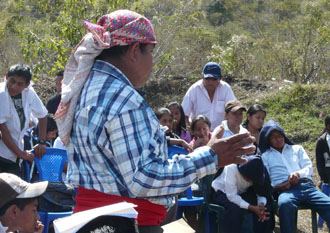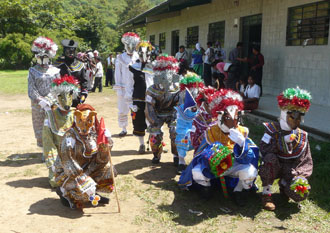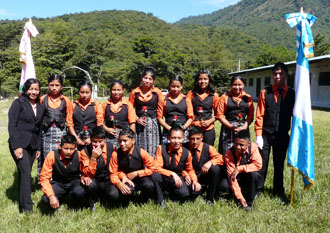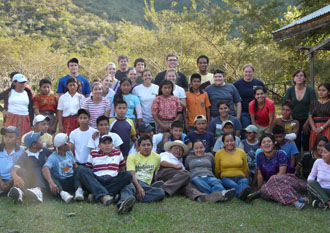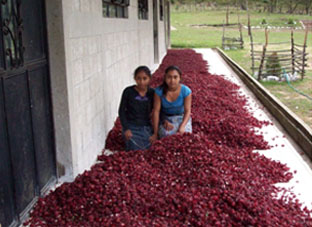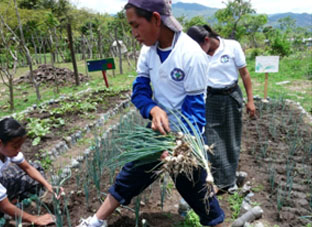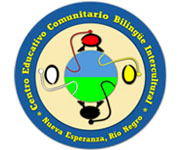 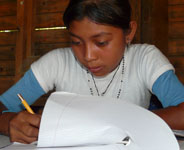 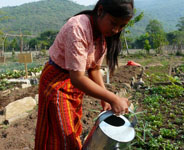 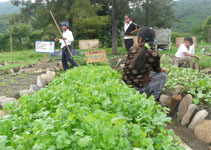 |
| |
|||||||
The Institute Our Methodology Homepage Checkout our blog Español English |
What you'll find immediately below is a description of the curriculum that we currently use at the New Hope Institute - the Tutorial Learning System (SAT). Below that we've outlined the theoretical framework for the pedagogical approach and curriculum that we plan on offering our students in the future - a project we call the Methodological Recreation of Bilingual Intercultural Education (REM-EBI). The Creation of SAT SAT was created in the early 1980s by the Foundation for the Application and Teaching of the Sciences (FUNDAEC), an NGO based in Calí, Colombia. Their aim was to contribute, through a revolutionary new educational program, to the sustainable development of rural communities in Colombia. SAT has since gained national recognition in Colombia and is used in schools throughout the country. Throughout all its courses, SAT emphasises teaching methods that are based on active, or hands-on, pedagogy, and privileges the qualitative participation of each student rather than simply relying on quantitative exam results. In addition, SAT was also designed to respond to the cultural particularities and economic contexts, as well as daily routines, that are common to students who live in rural areas. The goal is that students will be able to gain relevant and practical knowledge that can be immediately applied to the everyday work undertaken by their families and communities. Diverse worldviews and cultural perspectives are always kept in mind as well. Student are seen as the key actors in this educational process. In groups or working alone, students use self-guided textbooks, and work with materials and problems found in their own communities, all the while drawing on the support of the teacher or tutor. In this way, the community transforms itself into the students' own laboratory.
Bringing SAT to Guatemala was an attempt to provide innovative pedagogical and methodological solutions to our middle school curriculum, which hasn't been updated by the Ministry of Education for 35 years. We recognize that this situation is unlikely to change, especially in rural areas and for Indigenous, campesino and working class families, which have always been the most vulnerable and excluded in any and all processes of educational reform. When SAT was first brought in to Guatemala, it became clear that various changes were needed, especially with regards to reconciling the pedagogical approach with the multilingual and multicultural context of Guatemala. This has meant that since its arrival in Guatemala, SAT has been reworked in terms of its ideological, conceptual, and methodological components, a process which becomes woven right into the courses themselves as it provides another space for learning. SAT is considered an innovation in education that has the potential to allow rural Guatemalan students, who haven't had the opportunity to attend a middle school, to continue their studies within a system that foments active participation within the broader context of sustainable development. This allows these students to be educated without losing touch with the deep roots of their communities, both in terms of their ways of life as well as their worldviews. At the same time, it enables students to carry out their daily chores without running into conflicts with their scholastic obligations. SAT and the New Hope Institute All our students are able to attend our school thanks to scholarships that they receive from the Foundation. Once there, they immediately begin following the SAT curriculum in which we consistently emphasise the formation of rural community leaders. Upon completing the three years of study, students receive three separate degrees: the standard middle school degree, and two special ones that acknowledge the skills they've developed as promoters and practitioners of rural wellbeing.
The Foundation's REM-EBI project is part of the Bilingual Intercultural Education (EBI) movement that took form in Latin America during the last decades of the twentieth century and the very beginning of this present century. During this period, Indigenous communities have strengthened considerably their determination to renew, revalue, and recuperate their local cultures. One of the methods that they've used to fulfill these objectives, especially recently, is to use EBI as a means to revalue local languages and cultures, and to build and strengthen equitable intercultural relations. EBI, with its concomitant respect, celebration, and revaluing of local cultures, carries even greater weight in a country like Guatemala that is undergoing a process of democratic restoration, having passed through decades during which Mayan cultures, amongst others, were stigmatized, denigrated and violently rejected. Students from these ethnic groups, when their geographic location and economic status allow them to attend school, still rarely have the opportunity to attend an educational institution that recognizes and values their culture and language. Next Up: The Foundation In 2002, after 5 years of supporting the education of young, Indigenous students from the Rabinal area through individual scholarships, we realized the need to create our own Maya Achi pedagogy and curriculum. We recognized that the national education system was failing in its promise to implement educational programs that would emphasise and value Indigenous culture and languages throughout Guatemala. The new educational approach that REM-EBI will offer our students is specifically directed at Maya Achi youth. We do this taking into account the uncertain future for our children, as it's difficult to predict how Mayan communities will be structured in 20 or 30 years. Thus, our plan is to draw upon what ancestral Maya Achi knowledge holds to be the ideal development of a human being. This is an approach that emphasises the formation of "complete beings that contain all the elements of the universe", and the necessity of bringing this about through a pedagogy that is aimed at developing the biological, socio-cultural, and spiritual equilibrium of our students in a process that is holistic, systematic and gradual all at the same time. We hope that the development of this new curriculum here in Rabinal will serve as an example of the possibility of such a project and will be useful for other Indigenous and linguistic communities throughout the country.
As the goal of the REM-EBI project is to reflect local culture and language with the very design of its curriculum, we believe it is indispensable to work alongside the Achi community. We understand that the way of presenting knowledge in a Western curriculum isn't necessarily compatible with the worldview of the Achi. Thus participation of the community helps us to understand how this fact is manifested in reality. From the very beginning of the REM-EBI project, we've tried to keep the local public informed about our progress, as well as inviting their participation in a variety of ways depending on their available time, will, and knowledge. The theoretical base of our research is Participatory-Action-Research, through which the "subjects" of the research both participate in its development and benefit from it as well. The Starting Point for Methodological REcreation It's important to emphasise that our goal is to recreate teaching methodologies that have been in practice here for a long time. That said, the project will use SAT as a base because it takes into account, realistically and clearly, the socio-economic realities, needs and particularities of rural Latin American populations. In this way, we began to develop REM-EBI following the pedagogical objectives and subjects that are used in the SAT system. However, we only plan to use these objectives and subjects in a general way, conscious that in order to reflect Achi language and culture, much will have to be modified. Thus we recognize SAT and its objectives as the starting point for the development of REM-EBI.
Interculturalism
|
||||||||
